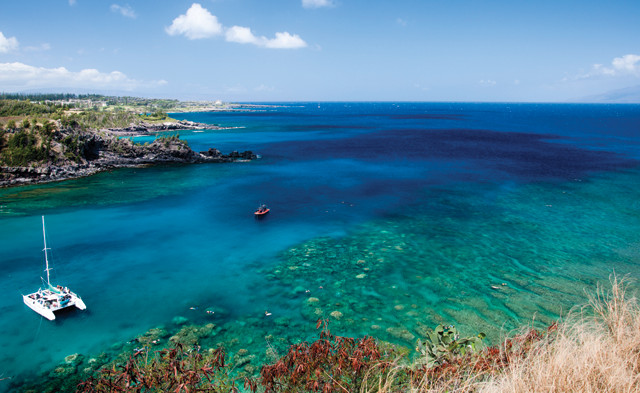
by Kate S. Zalzal Wednesday, March 29, 2017

Honolua Bay, Maui, a designated marine life conservation district, was one location studied by researchers examining links between land use, water quality and coral reef health at coastal sites around Maui. The bay is surrounded by a watershed featuring potential sources of nutrient runoff from human activities, such as golf courses and sewer systems. Credit: Hawaii Savvy, CC BY 2.0.
Submarine groundwater discharge — the flow of fresh and brackish groundwater from land to sea — can transport contaminants to coastal ecosystems. But little is known about the direct impacts of this process on marine communities. In a new study published in PLOS ONE, researchers examined links between land use, water quality and coral reef health at coastal sites around Maui, finding that anthropogenic contaminants delivered via submarine groundwater are a source of chronic stress to nearshore marine ecosystems.
Scientists from the University of Hawaii at Manoa investigated six bays adjacent to various potential sources of land-based nutrient pollution. A concurrent study also identified these locations as submarine groundwater discharge sites. Using field experiments, species community analysis and isotopic measurements of algae and water, marine botanist Daniel Amato and his colleagues characterized the ecosystem health of the bays and traced nutrients in algae back to their sources.
Reefs adjacent to sugarcane farms and to the Wailuku-Kahului Wastewater Reclamation Facility were most impacted, having high macroalgae abundance, low species diversity, and high nitrogen content in water and algal tissue samples. The team also found Kahului Bay, adjacent to the wastewater facility, to be barren of corals and dominated by thick mats of algae, a phenomenon not observed elsewhere in Hawaii. Thus, the researchers concluded that submarine groundwater discharge can be a significant transport pathway for land-based nutrient contaminants into marine ecosystems.
© 2008-2021. All rights reserved. Any copying, redistribution or retransmission of any of the contents of this service without the expressed written permission of the American Geosciences Institute is expressly prohibited. Click here for all copyright requests.